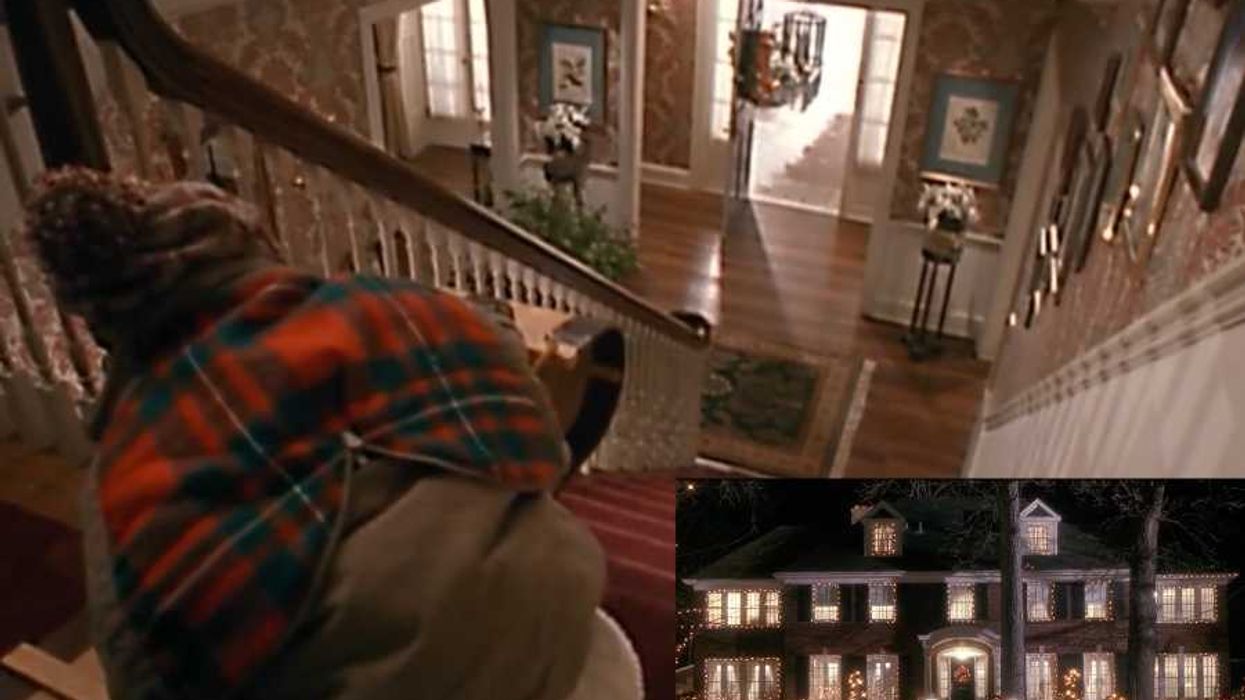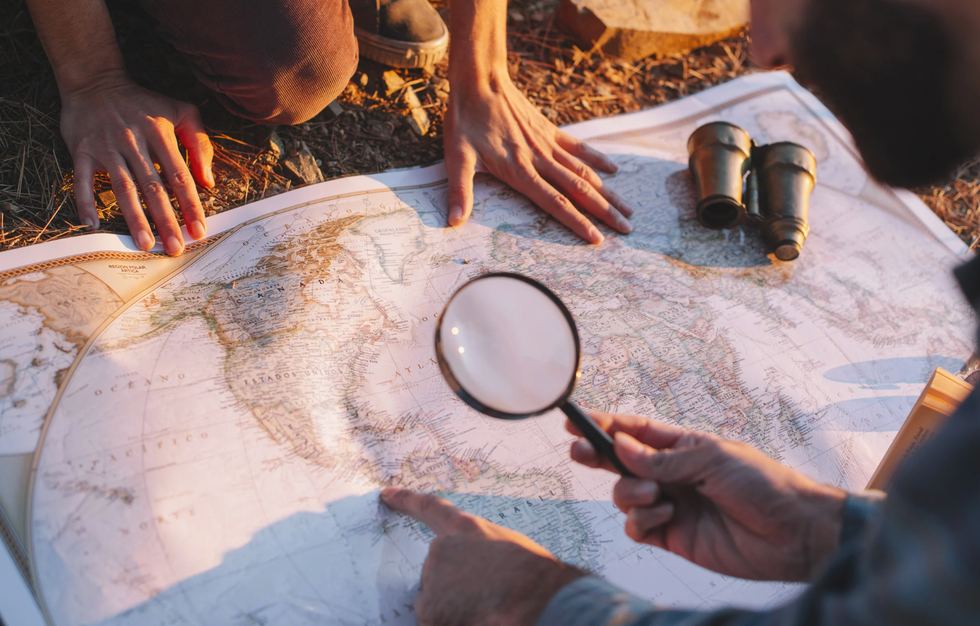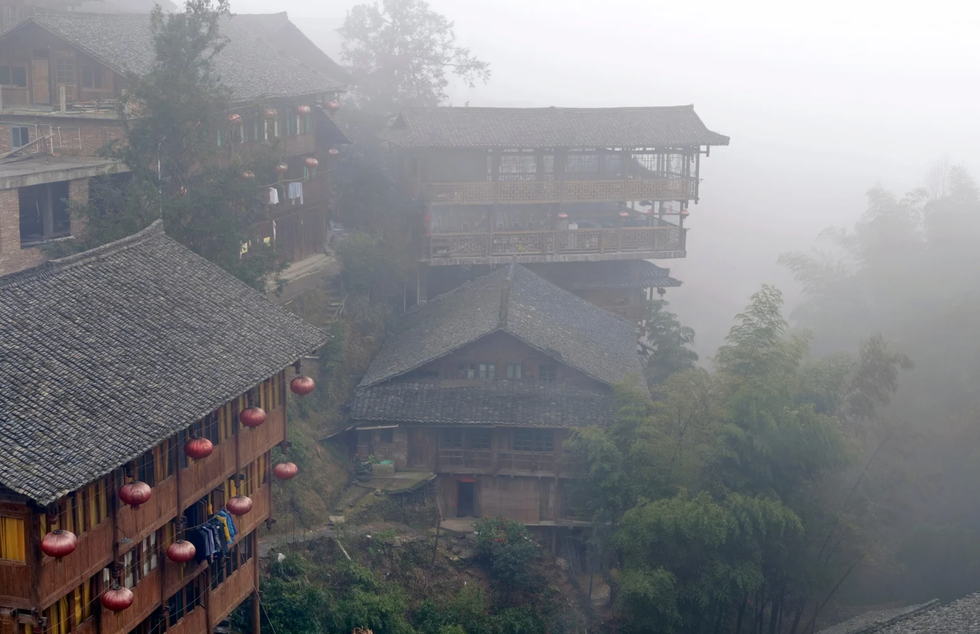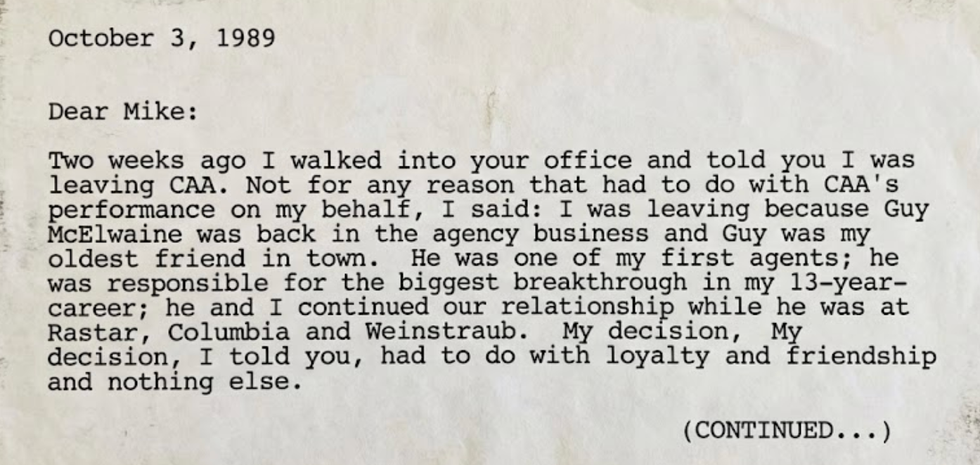“Captain Planet! He’s our hero…”
If you’re a millennial, you can probably fill in the rest. While the green-mulleted eco-hero didn’t actually bring “pollution down to zero” as the show’s theme goes on to assert, Captain Planet and the Planeteers did introduce a generation to the profound threats of global warming, deforestation, nuclear war, and even the scourge of land mines and puppy mills. And it made all those horrors fun! The show attracted a standout celebrity voice cast before the era of Pixar cool (and Pixar budgets), boasting a roster that reads like a who’s who of ’90s Hollywood: LeVar Burton, Whoopi Goldberg, Jeff Goldblum, Meg Ryan, Tim Curry, Martin Sheen, Ed Asner, Sting. It was part cartoon, part edutainment, and may have been the best example of progressive kids’ propaganda ever to grace TV screens worldwide.
As a kid who was mildly terrified by the looming perils posed by ozone holes and the proliferation of aerosol anything, I have fond memories of cheering Captain Planet’s conquests over villains like the pig-faced Hoggish Greedly and the pretty, blond, horrible Dr. Blight. I admired Gaia, the nurturing, powerful, seemingly telepathic spirit of planet Earth who called together the Planeteer team. I remember debating with myself which of the Planeteers’ powers—Earth! Fire! Wind! Water! Heart!—best suited me. Each episode threw the teenage Planeteers and viewers into new moments of environmental crisis: Remember when water supplies were tainted with “rat rot,” turning people into vermin-human hybrids? Remember when money-hungry businessman Looten Plunder sold tanks and bombs to both sides of a Middle East dispute?
Today the Planeteers would be growing silver around the temples (were they not animated). They’d live in a world where a Facebook group of other Planeteers (real-life, grown-up devotees of the show) number over half a million. Some are just fans; others, like a big, active group in Ghana, organize local environmental projects, like community cleanups. There are Planeteer meetups in New York and Los Angeles, and Captain Planet costumes are still a fixture at environmental protests all over the country. (Captains Planet have been arrested at demonstrations against the Keystone XL Pipeline, Wall Street impropriety, and the BP Deepwater Horizon oil spill, just to name a few.)
Captain Planet, as a symbol, lives on. Yet many of us who watched the show are now raising our own kids in a world experiencing climate change and little movement toward mitigating, let alone curbing, the crisis (the laudable but toothless COP21 agreement notwithstanding). If ever there were a time for a hero for Earth, it’s now. If ever there were programming I’d prefer to mix into my kids’ TV diet of Ninjago and Daniel Tiger’s Neighborhood, it’s Captain Planet. But despite the growing list of kids’ throwbacks now listed on streaming services, there’s no 21st-century Captain Planet. We live in a time of veritable superhero glut between Marvel TV series and movies, and as much fun as it is to observe the modern, gritty takes on heroes and their villainous foes, right now I’d much rather see some victories—even if only animated—over the sinister crush of, as the show’s theme song put it, “bad guys who loot and plunder.”
How did a television show that vilified corporate greed and proposed “heart” as a superpower spread almost overnight to more than 220 U.S. markets and over 100 countries worldwide? And then, why did it vanish from the cultural landscape, with only a single season available on DVD, periodic short runs on Cartoon Network, a few bootlegs on the internet, and a rumored movie that never gets made?
Where the hell is Captain Planet when we really need him?
Captain Planet, Arise
Some heroes’ power comes from exposure to radioactive contagion, genetic mutation, or the sun. Captain Planet arose from a different source of power: billionaire Ted Turner, the man who founded CNN, the United Nations Foundation, and the Goodwill Games—and almost single-handedly drove the restoration of America’s bison stock.
“I have always had an interest in cartoons,” Turner tells me via email. “When we ran them in the early days of WTBS, they got good ratings.” He explains, “Back then, kids were attracted to cartoons, and I got the idea that we should make one that would teach them about the environment. I thought it would make a lot of sense to reach children early and help them understand their role in taking care of our planet.”
As Barbara Pyle, a film producer and former head of the Turner Environment Division (TED) within Turner Broadcasting, remembers it, one day in 1989, Turner called her into his office and simply said: “Captain Planet.”
She responded, “Yeah, Ted? And what else?”
And as she shorthands the conversation now, his answer was essentially, “Well, that’s your problem.”
So while Captain Planet, a superhero for Earth, was Turner’s idea, the peculiarly diverse, greed-critical, mother goddess Gaia-loving execution of the idea was a result of his putting Pyle in charge and giving her team nearly free rein.
In her role within TED, Pyle had already been tasked with spreading environmental messaging, and for years she had busied herself with getting environmental films on the air on Turner Broadcasting airways for do-gooders at the United Nations and various environmental NGOs.
“I had the keys to the kingdom. I didn’t have airtime, but I could get airtime by the very force that I was in the building,” Pyle explains. Turner had made it her job to churn out environmental programs, even if he hadn’t reserved time for her on CNN, TBS, or other channels within the broadcasting system. But those who did control the networks’ airtime were right down the hall from Pyle. “I could lobby. I could sit at somebody’s door. I could threaten to burn myself alive … until they would put up whatever it was I wanted to air. … They couldn’t get rid of me.” So for years, she made documentary films and series, including The Day of Five Billion and People Count. But as far as changing minds, Pyle questions the documentary form. “Who watches documentaries? Smart people and also people who are already set in their ways. So we talked about alternative programming routes.”
This is how she ended up in charge of a cartoon.
Turner pulled together a small team, including Pyle, to put some animated flesh on Captain Planet. Pyle remembers walking into a conference room for the first show-planning meeting; there were 20 men and one other woman in the room. Captain Planet was fast becoming duplicative of the usual, muscular superhero: a tough guy to clean up Earth, someone to save us all.
Pyle had an overriding sense that this kids’ show was “not [just] a superhero thing.” And during that meeting, in a matter of hours—because she needed something to silence the machismo—Pyle made up the Planeteers and added earth mother Gaia.
“It wasn't a creative move. It was defensive. Out of nowhere came the five Planeteers.” Pyle tells me they were based on people she’d filmed in her documentaries.
Kwame (Earth) was the group’s leader and tended toward seriousness and reason. According to Pyle, Kwame was a cross between two young men she and fellow producer Nick Boxer met in Zimbabwe and Ghana.
Wheeler (fire) was the most impetuous of the group, tended to need the most environmental coaching, and was based on Pyle’s redheaded father.
Gi (water) was the daughter of marine biologists, a friend to dolphins, and sported seriously high-waisted hiking shorts. She was from Thailand and loosely based on Chee Yoke Ling, a Malaysian international lawyer who has served as a delegate to many U.N. conferences and summits.
Linka (wind), from the Soviet Union (after its collapse, a generalized “Eastern Europe”), was partly inspired by the worldview of German Green Party candidate Petra Kelly, but also served as the team’s myth buster. For the time, it was rather radical to cast the gorgeous, leggy blonde as the rational intellectual.
Ma-Ti (heart), from the Brazilian Amazon, was the smallest and youngest. He was raised by a shaman after his parents died defending the forest during a period of political unrest. Gentle Ma-Ti, through sheer force of empathy, could communicate telepathically with animals and people. The character was based on Brazilian indigenous leader Paulinho Paiakan.
The idea to make “heart” a power was prompted by something Sunderlal Bahuguna, a leader of India’s Chipko tree huggers, told Pyle and Boxer when they were shooting a documentary that featured him: “We have our head and we have our hands, but what we never listen to is our heart. And if we would listen to our heart, we would not destroy nature.” Despite what many kids assumed in their playground reenactments of Captain Planet, heart was not the lamest power. Says Pyle, “Heart is the combining power. Earth, wind, fire, and water are inanimate forces. Without heart there would be no Captain Planet.”
The show wasn’t, to Pyle’s mind, about calling up a savior. It was about empowering children to use their own abilities. “Captain Planet doesn’t exist,” Pyle insists, peeling away some of the mythos. “Captain Planet is actually a metaphor, and he only existed in [the Planeteers’] imaginations.” This may help explain why Captain Planet himself was such a bland character, a toothpaste-colored muscleman with a penchant for bad puns who came when called, (usually) got the job done, and then quickly disappeared.
Pyle spent the bulk of her working days in collaboration with Boxer, a producer with a pensive, expansive mind and a discerning ear for story. Boxer built Captain Planet’s universe. He penned the lyrics to the theme we all know. He wrote the pilot story, has writing credits on more than half the episodes, and was directly involved in all of them in some way.
As the show’s popularity grew, he’d often get razzed for working on what detractors called “Ted Turner’s propaganda.” But to Boxer’s memory, Turner only requested topics for, at most, a half-dozen episodes out of the total 113. There was feedback throughout from Pyle and others, but with biweekly turnaround on concept, premise, script, and animation, if anything “this is Nick Boxer’s vision, Nick Boxer’s propaganda,” Boxer jokes.
In fact, Captain Planet’s face is Nick Boxer’s. In a batch of sample designs for Captain Planet’s look, as a bit of jest, the designer added one based on Boxer, and that happened to be the image Turner picked. The chin, the eyes, the widow’s peak, the entire Captain Planet countenance—minus the mullet, which was added based on a shadow in a photo of Boxer—all of it is Nick Boxer.
Designing a World Where Environmentalists Win
When you compare the rough premises of Captain Planet storylines to those of today’s kids’ shows, it can be like comparing PBS Frontline to Yo Gabba Gabba. They’re totally different animals. Current kids’ shows that do touch on environmental threats, like Wild Kratts, do so in a gentle, silly way. Think Chef Gourmand snatching up all the platypus eggs from a local den to cook for a fancy dinner, or a fashion designer stealing monarch butterflies to turn them into living barrettes. While modern shows contain facts about the natural world and end in a predictable save for wildlife, they lack Captain Planet’s edge.
Even the postapocalyptic, trashed Earth of WALL-E might have intrigue and a bit of danger, but it’s also sweet; salvation comes with a kiss. Today’s resolutions make kids feel good, safe. In Captain Planet, the Planeteers faced off against environmental monsters who would just as soon see them, and their earth-loving ways, quite dead. When BP’s Deepwater Horizon plumed an unconscionable amount of oil into the Gulf of Mexico, CNN ran B-roll from Captain Planet’s pilot, the episode in which Hoggish Greedly’s oil rig causes an oil spill to bubble up from the ocean floor. The clip was poignant because Captain Planet, sadly, was prophetic—not something that can be said of most kids’ shows.
In writing a show to teach kids about the horrors of surface mining, acid rain, drift net fishing, smog, and toxic dumping, Pyle and Boxer had to show the harm being done to the planet, but not leave kids asking their parents—scientists, businesspeople, miners, what have you—“Are you evil, Mommy? Daddy?” That’s why the villains were developed without nuance. “That’s why they were the environmental equivalent of a homicidal maniac,” says Pyle. “We had to make the villains so over the top that children wouldn’t recognize their parents.”
Most children’s shows have long failed to pass the Bechdel test, and tokenism prevails even today. But with Captain Planet, Pyle managed to push through those barriers to ensure that the people in crisis in each episode reflected depth, not stereotypes. “We wanted the program to work cross-culturally. It could not work if it was about five little American kids on an eco-adventure.” What Captain Planet did demonstrate—whether the subject is villagers in Africa being swindled out of their water supply by a profiteer building a dam, world leaders bungling an environmental summit under the influence of arch-villain Zarm, or even poor Linka falling prey to a new designer drug—is that anyone can be manipulated by the powers of greed and impropriety.
Pyle recalls an early dispute over the appearance of mother goddess Gaia. If she and Boxer stepped away from the production team, “Boom! All of a sudden, Gaia becomes a white Barbie doll,” remembers Pyle. When Pyle would make an issue of it, suddenly “she looks like Whoopi Goldberg.” (Goldberg was the original voice for Gaia’s character.) Eventually, Gaia settled into what Pyle calls a “plump beige woman” who was “a lot thinner than she was supposed to be.”
“One of the things that made the show such a challenge and ahead of its time … was that we couldn’t just tell a story in a vacuum with no intentionality,” says Boxer. “We wanted to put an environmental ethic into the show to inspire children, to empower children, to make them curious about these issues, and we wanted to do it as accurately, and informatively, and powerfully from a storytelling perspective as we could.”
Partially because of an ingenious distribution model—Turner syndicated first-run Captain Planet episodes to other networks, where they aired the day before appearing on the company’s own channels—within six months, the show had spread around the world. Remembers Pyle, “Within months we were number one in every syndicated market.”
Environmentalists had been given a megaphone and a direct, weekly connection to a generation of the world’s kids. “We worked like dogs,” says Pyle, “because we never knew when we would get fired. We never knew when the bubble would burst.”
It’s almost madness that it worked, and for so many years. Yes, the first few seasons’ art could have been better. In hindsight, if you can find it online, the final season’s rapped theme is now so dated it would make my kids giggle. But Captain Planet’s wild amalgam of environmental warning, big-hearted, greedy-scumbag-kicking, anti-consumption, earth-loving stories, with all their sheer nerve and urgency, got to many of us. And as over the top as some of the storylines were—land mine/atom bomb/Hitler episode, I’m looking at you—they got an astounding amount right.
Where Captain Planet Still Lives
If any group of people is well equipped to comment on the need for Captain Planet as a cultural icon, it’s the folks at the Captain Planet Foundation. Founded by Pyle during the show’s heyday, the organization drew a percentage from the show’s merchandising revenue and continues to fund projects like school gardens and habitat restoration. Teachers can request Planeteer Club kits that include rings and patches that students earn by conducting water- and energy-use audits or creating environmental projects at school. In its 25-year tenure, the foundation has distributed $1.3 million to kids.
Leesa Carter-Jones, executive director of the foundation, says rumors that the show will return get everyone at the foundation excited. “I do think that it is really important,” says Carter-Jones, who’s made sure her nephews have the first season of the show on DVD.
She says that while parents still remember Captain Planet, “younger kids, they don’t necessarily know who Captain Planet is in particular.” But, she adds, “they understand what he must stand for because of his name, and an idea of a hero for the planet that they can partner with, kids love that.”
The Captain Planet Foundation is a successor to what could have been an empire. The cash flow from merchandising certainly could have been greater. Captain Planet sprang up at a time when the model of children’s programming was changing. Instead of profits coming from ad time as they once had, explains Boxer, “the real profitability for children's programming came from the licensing and merchandising.” Captain Planet never did as well as other properties in the toy aisle. And from the beginning, Pyle insisted upon tight restrictions on licensing and merchandising, requiring recycled materials and less packaging. Plus, 10 percent of all profits from licensing and merchandising deals went to the Captain Planet Foundation.
When it comes down to it, says Boxer, “almost everything on television is about money, and so you have to prove that you’re worth more financially than the alternative, even if the alternative is a terrible message.”
The show ran until 1996, the same year that Turner Broadcasting System merged with Time Warner. At that time, Pyle and Boxer had a Captain Planet film in hand, green-lit right before the merger. “There was a movie,” says Pyle, “and it was brilliant. We went through years of developing a brilliant script.” Pyle says the rug was pulled out from beneath them during the corporate shuffle. She says that during the chaos of the merger, “there was blood flying.” But that wasn’t the last we’d hear of a Captain Planet feature.
A few years ago, Sony Pictures green-lit a different Captain Planet movie, to be produced by Mark Gordon (Steve Jobs), Don Murphy (Transformers), and Susan Montford (Vampire Academy). News of that movie was met with excitement online, but there hasn’t been any public word of progress. (GOOD reached out to Sony multiple times, but reps from the studio could not confirm the status of the movie.)
“This thing ... has been lurking around for years,” says Pyle. “Did they ever even call me or Nick? No. Were they interested in knowing any of the depth of mythology that goes into Captain Planet? Not even remotely. People would tell me how happy and excited they were that there was going to be a movie, and I'd say ‘Well, I’m not. Because it’s not going to have any element of what the series had, and it's all going to be made by the same people who brought you Transformers.’”
There’s some question as to what a modern Captain Planet reboot would be like. What kind of mass appeal would there be for a class of environmental vagabonds—quiet revolutionaries—who wield superpowers, but apply them sparingly? Would the movie forget the Planeteers altogether and let Captain Planet become like every other superhero, the puffed-up strongman, as plastic as his action figures?
If getting a movie made is so complicated, I ask, why hasn’t the original Captain Planet at least found a second life on streaming services like Netflix?
Pyle, not one to mince words or overlook the base impulses of corporate goons, tells me, “Ask Cartoon Network. I have dedicated my life to getting Captain Planet back on the air.” A representative of Cartoon Network tells me that while “Captain Planet is not currently on the schedule,” they are looking for “an appropriate time to rotate it back on the Cartoon Network or Boomerang schedule” at some point in the future, but as of now, “there are no plans to do so.”
Pyle has succeeded in resurrecting the show in Ghana, where the first run was wildly popular. Others have worked to get the show back in very limited markets, like a stint online at Mother Nature Network. As far as Pyle can tell, “Captain Planet is sitting at Turner Broadcasting in a ball and a chain. They won't release it. … I have begged. I have cajoled. It’s really made me ill having to know that we’ve lost 15 years of Planeteers.”
“I give Ted Turner a lot of credit for doing Captain Planet,” says Boxer, “but I feel like he missed a real opportunity, not doing more Captain Planets.” Other environmental kids’ shows, that is. Boxer, of course, sees a reminder of the eco-friendly superhero every time he glances in the mirror. “In some ways Captain Planet was one of the best experiences of my life,” he tells me. But in other ways, it made working life harder. “I can’t work on something I don’t believe in. I keep hoping I’ll end up doing another Captain Planet.”
I hope he does, too. In preparing for this story I bought the single season of Captain Planet currently available on DVD, and my kid immediately swiped it. I’ve tried to raise him to care about the planet. After binge-watching the show, there was a discernible change in him. We can’t walk anywhere without him turning into a one-kid litter cleanup crew. He bemoans deforestation. He’s worried about lunchroom waste and has been demanding compost at school. He gets on my case when we drive. (“All this pollution. You’re putting it out into my world.”) When he heard the Groundhog Day prediction for an early spring, he put his face in his hands, shook his head, and whispered, “Climate change.”
He’s 6. I watch Captain Planet with him now and worry it will scare him. He’s not scared. He’s pissed. And he seems to think he’s in a fight for the future of the planet. I want every 6-year-old to feel like he does.
I consider that episode when Wheeler gives up his ring, time-travels, and finds a future world in environmental ruin. His fellow Planeteers are older, struggling, unable to overcome environmental battles on their own. They can’t call upon Captain Planet because when they’re separate from one another, there is no Captain Planet.
Years ago, Ted Turner had an idea. Today, even more than when we were kids, we need a new environmental hero story—our kids need a Captain Planet; we need them to become Planeteers. We need a radical critique of all the monstrous ways we’re falling short—one that celebrates environmental activists and depicts a web of power evoked by people who, faced with a dying planet and human greed, are determined to do the right thing.
After all, as Captain Planet was always keen to tell us, “The power is yours.”

















 A hotel clerk greets a guestCanva
A hotel clerk greets a guestCanva Gif of Faye Dunaway' as Joan Crawford demanding respect via
Gif of Faye Dunaway' as Joan Crawford demanding respect via  An empty rooftopCanva
An empty rooftopCanva
 A road near equatorial Atlantic OceanCanva
A road near equatorial Atlantic OceanCanva Waves crash against rocksCanva
Waves crash against rocksCanva

 Two people study a mapCanva
Two people study a mapCanva Foggy Chinese villageCanva
Foggy Chinese villageCanva

 An excerpt of the faxCanva
An excerpt of the faxCanva